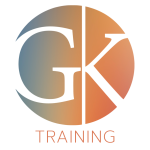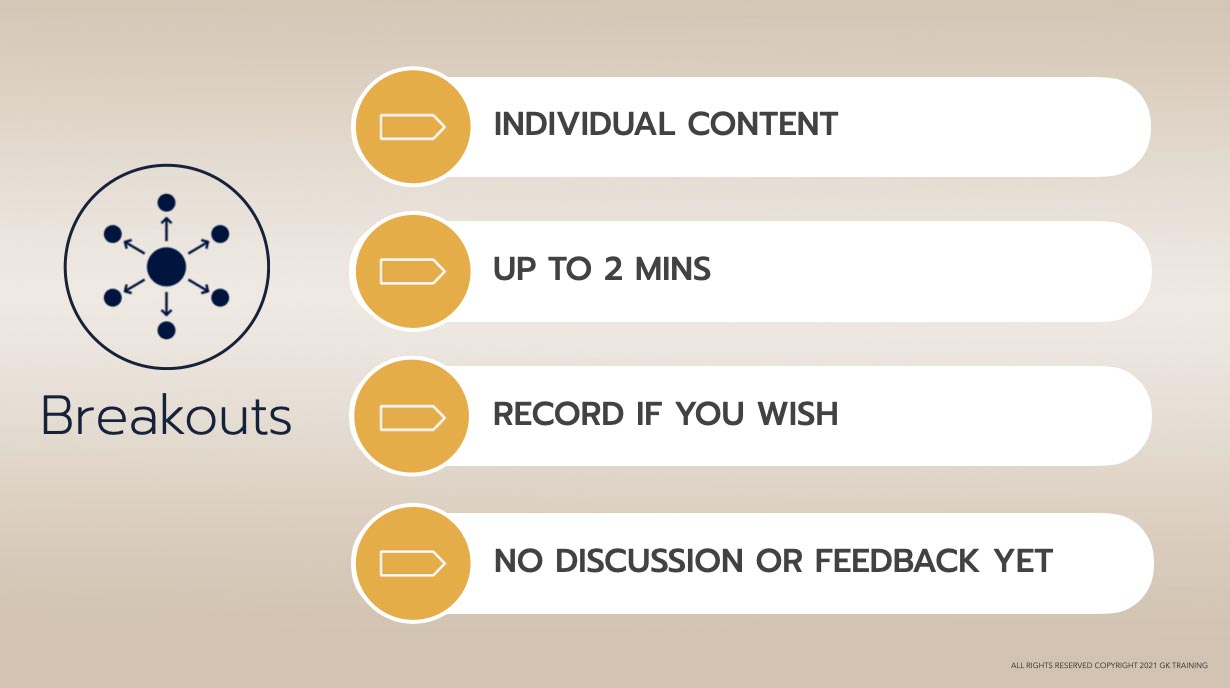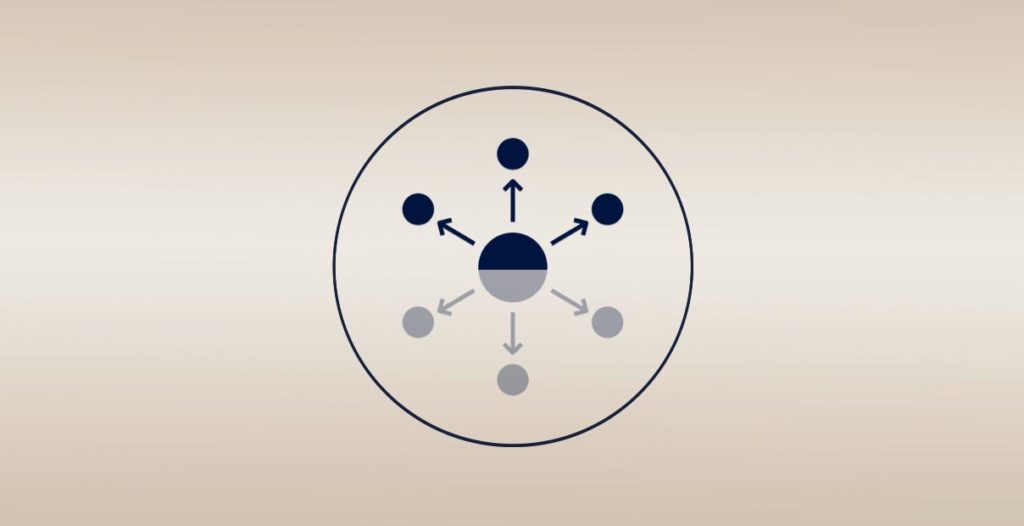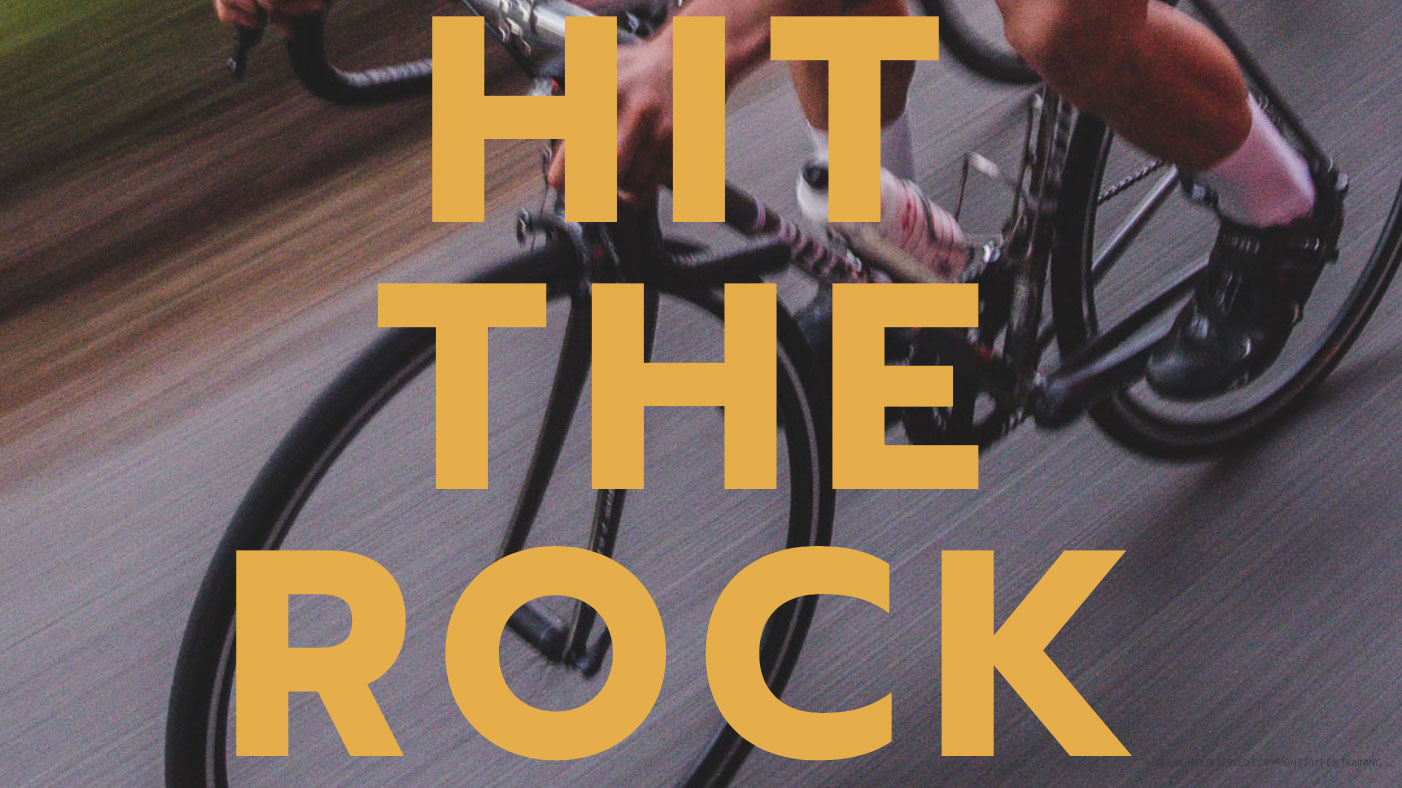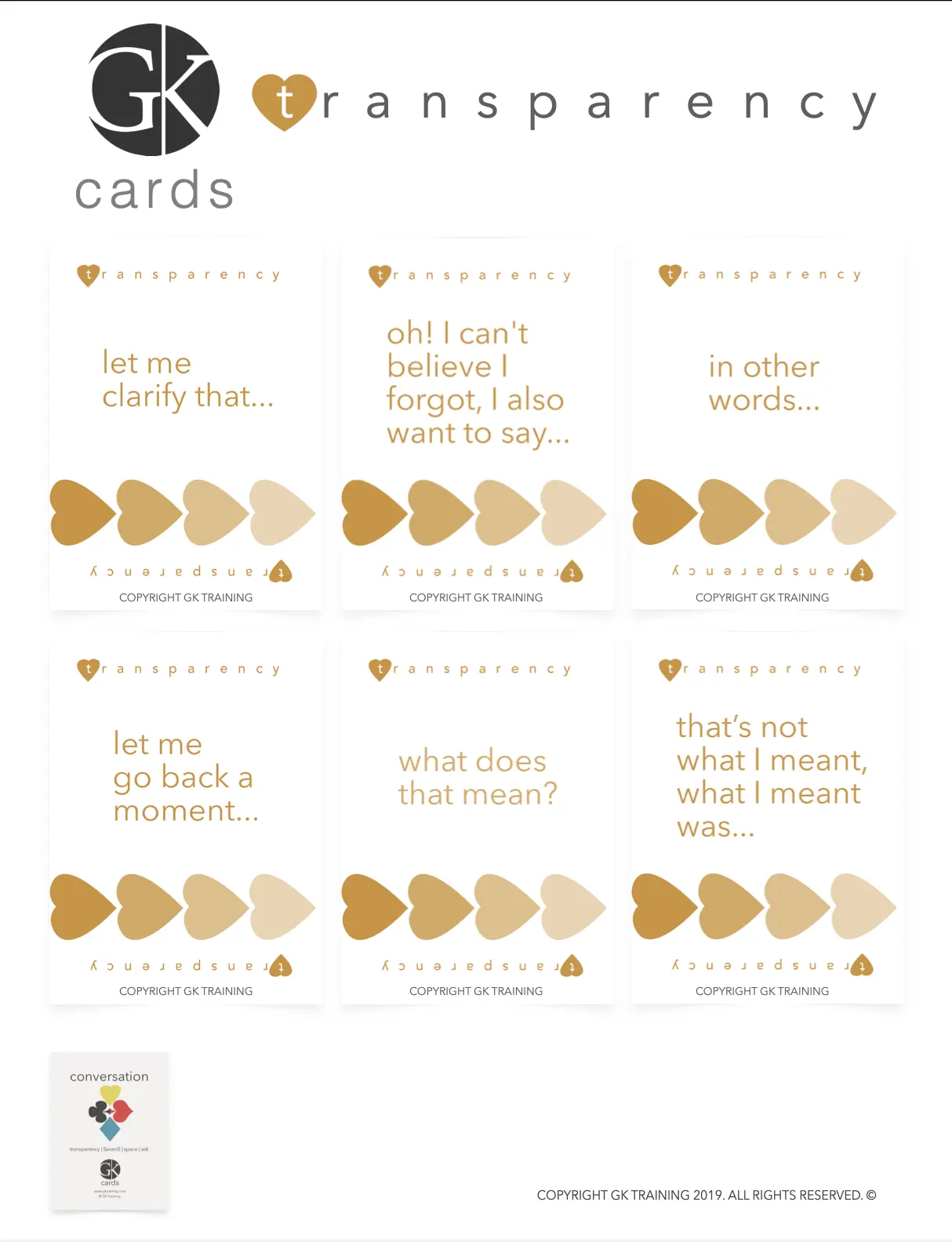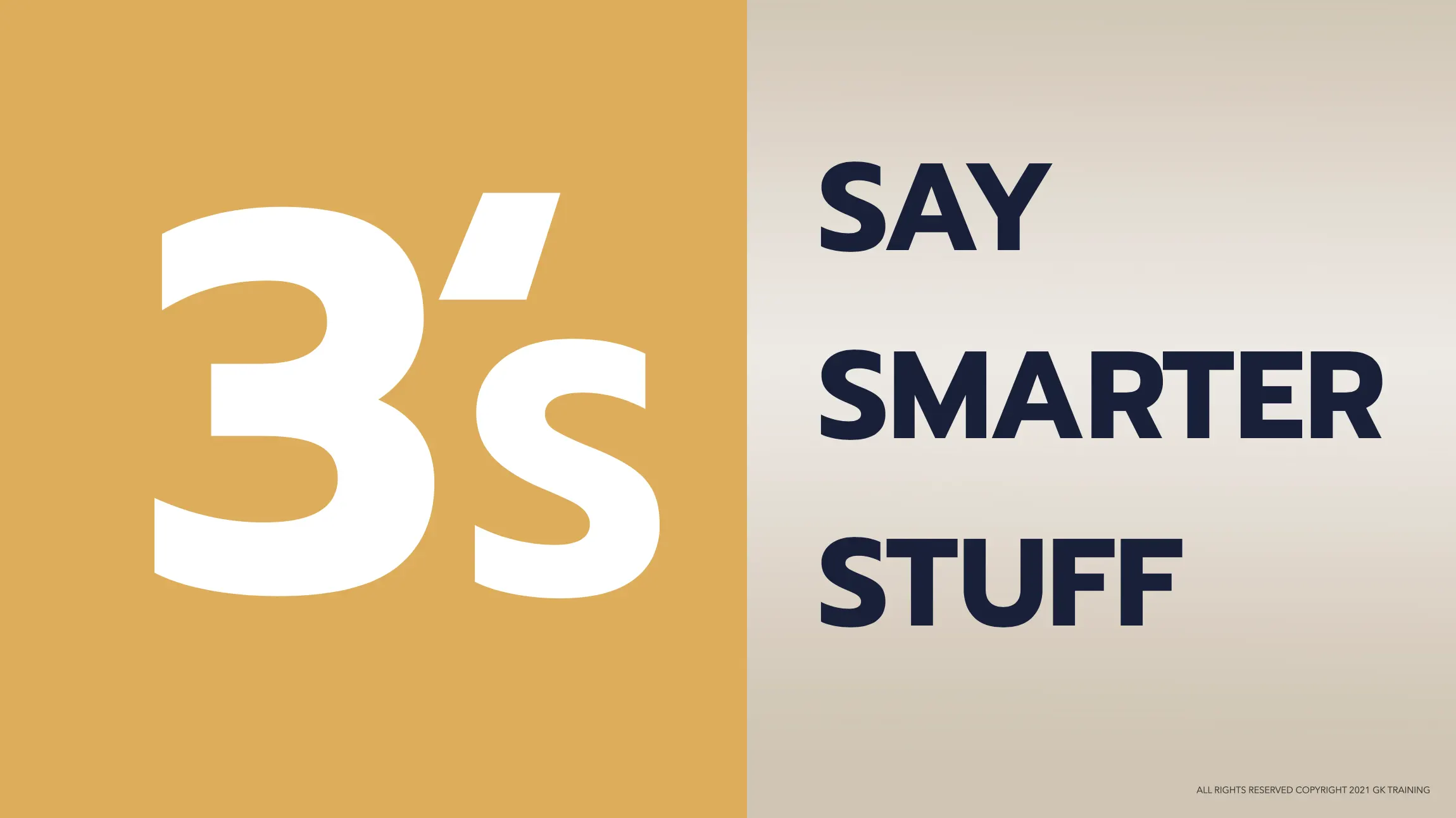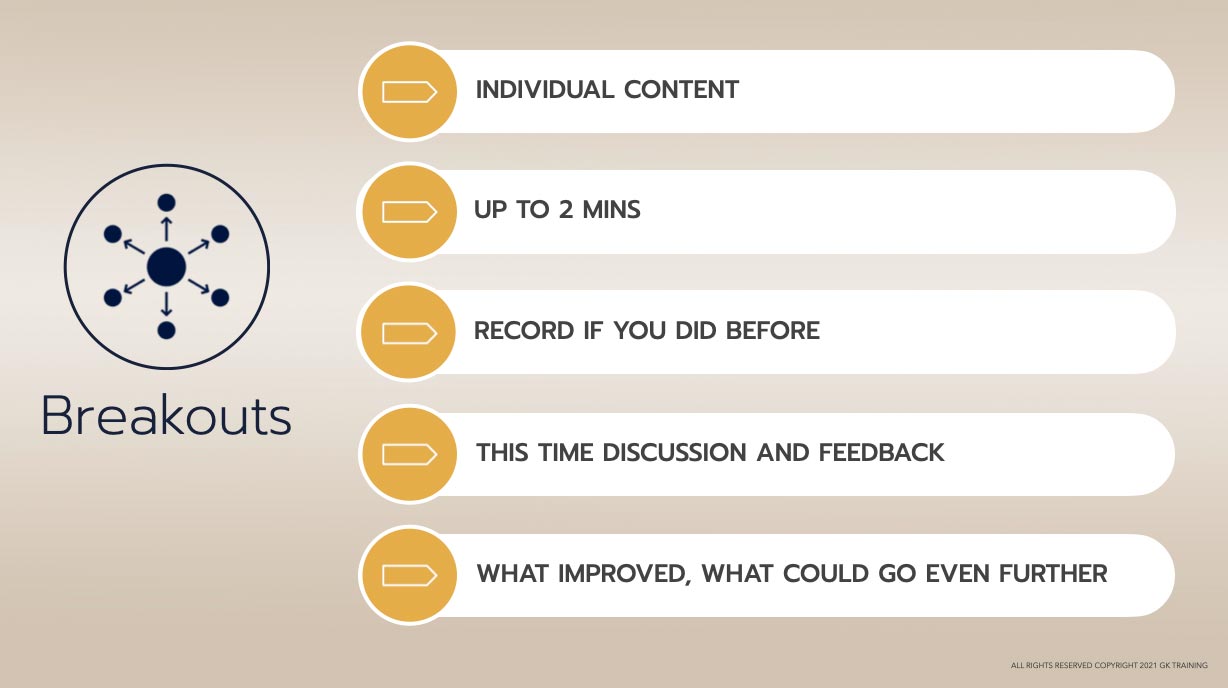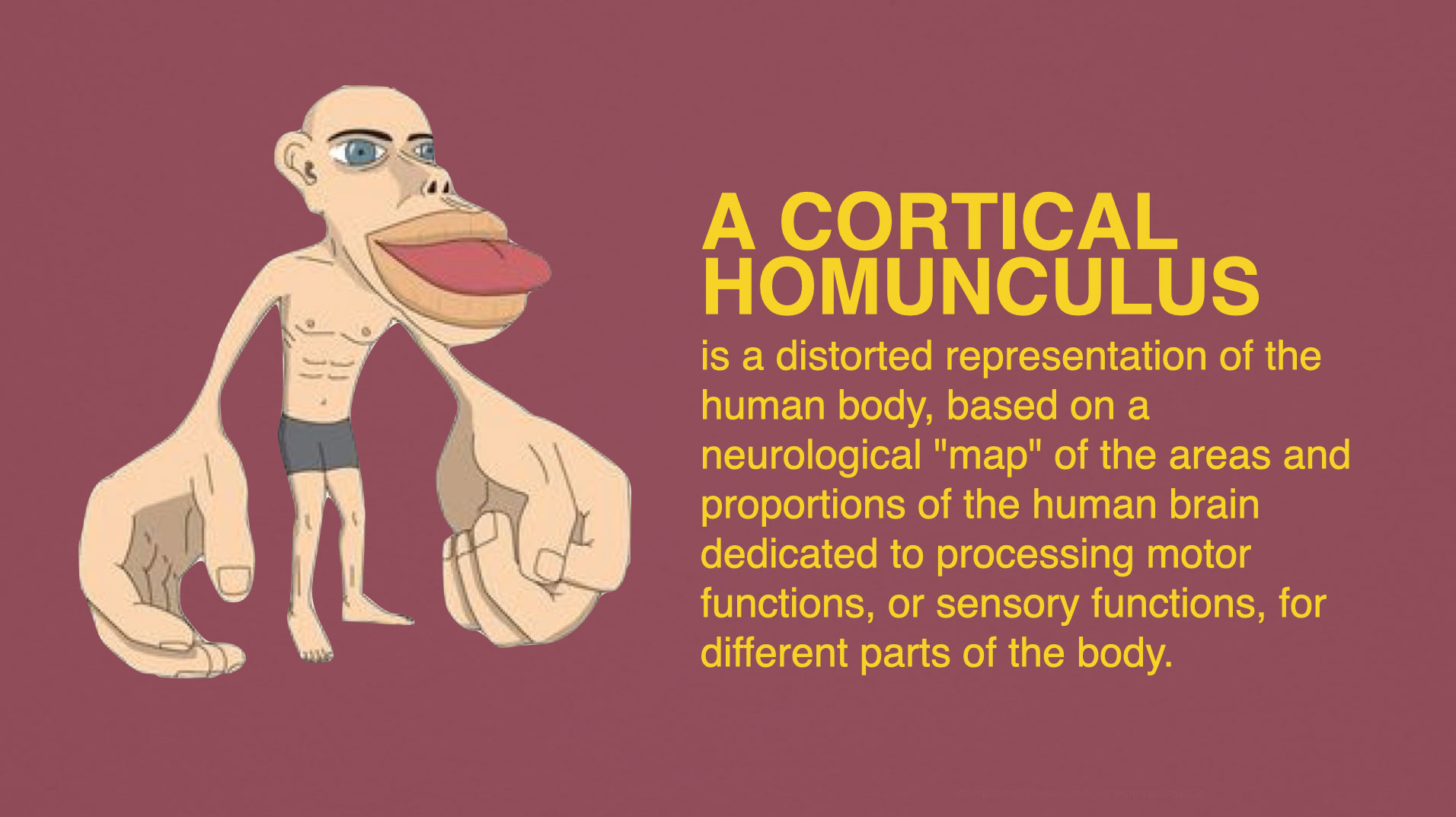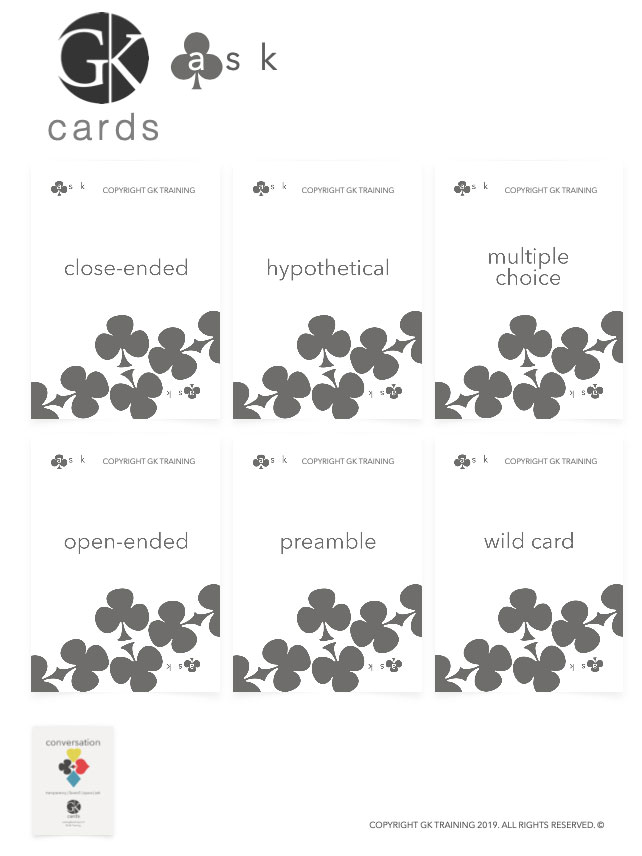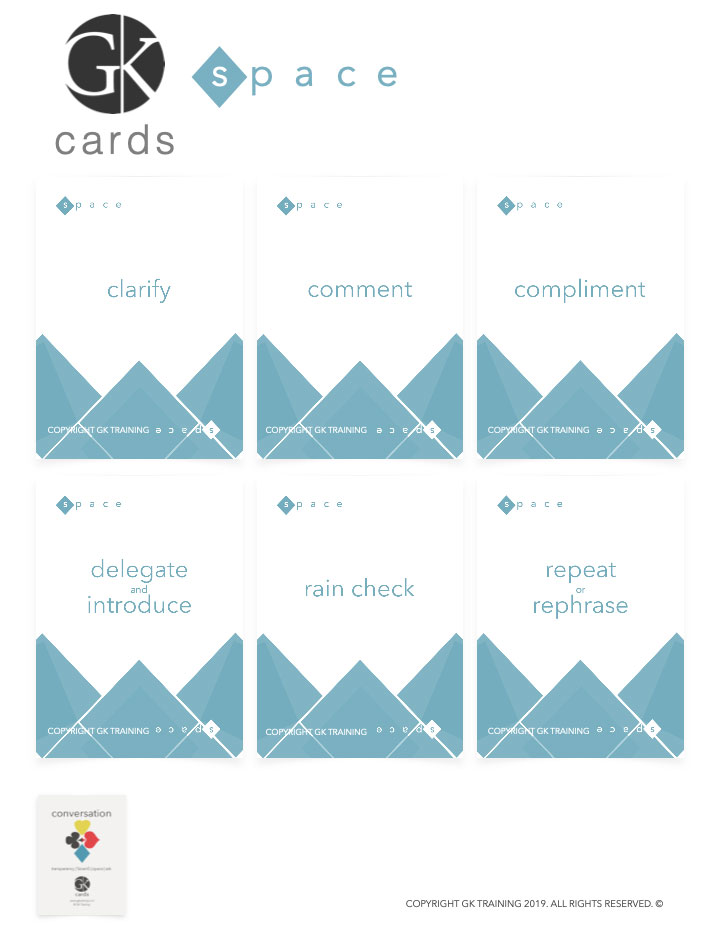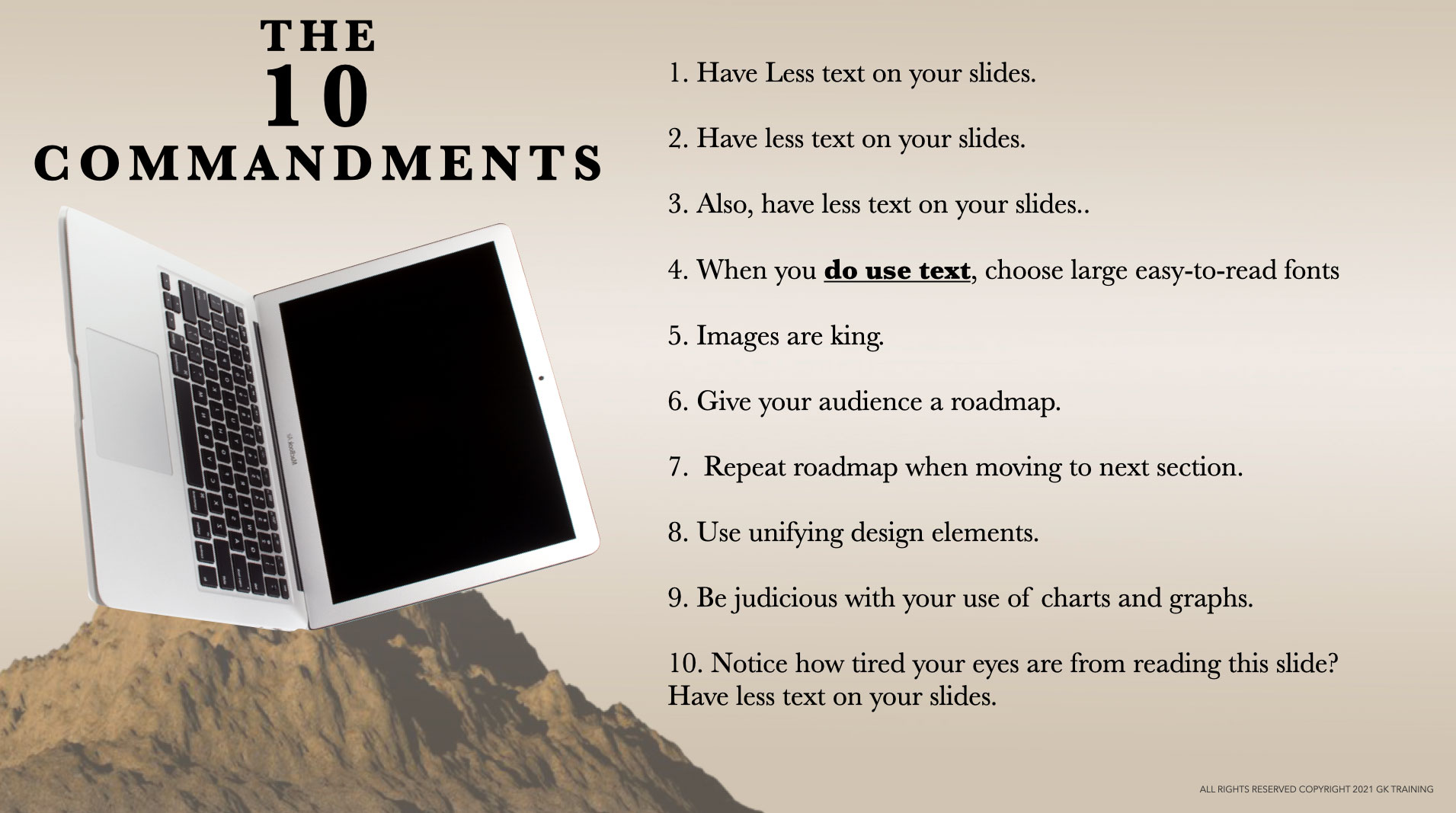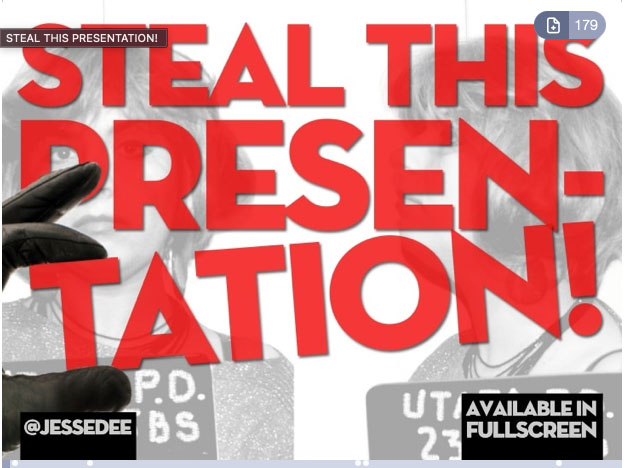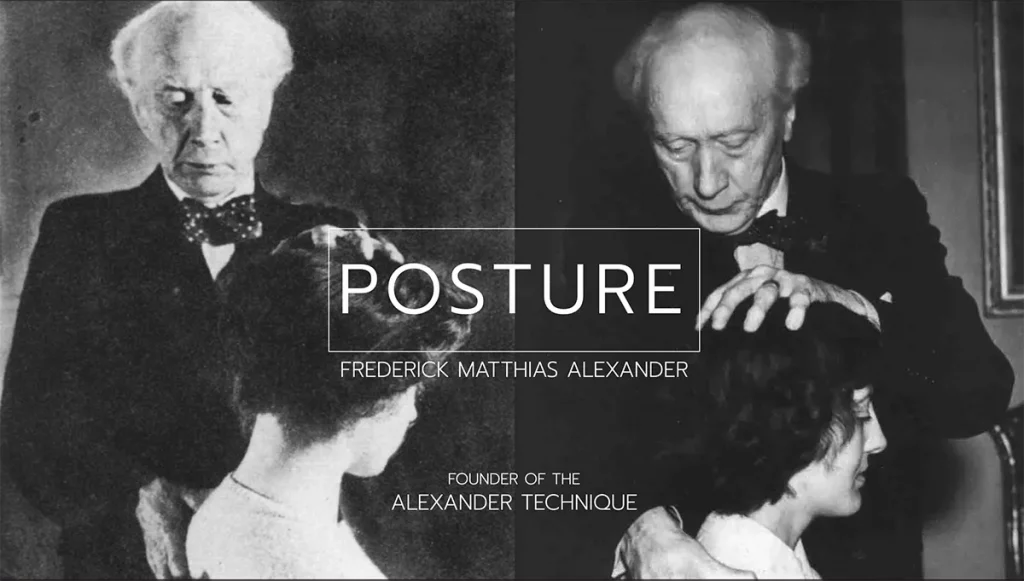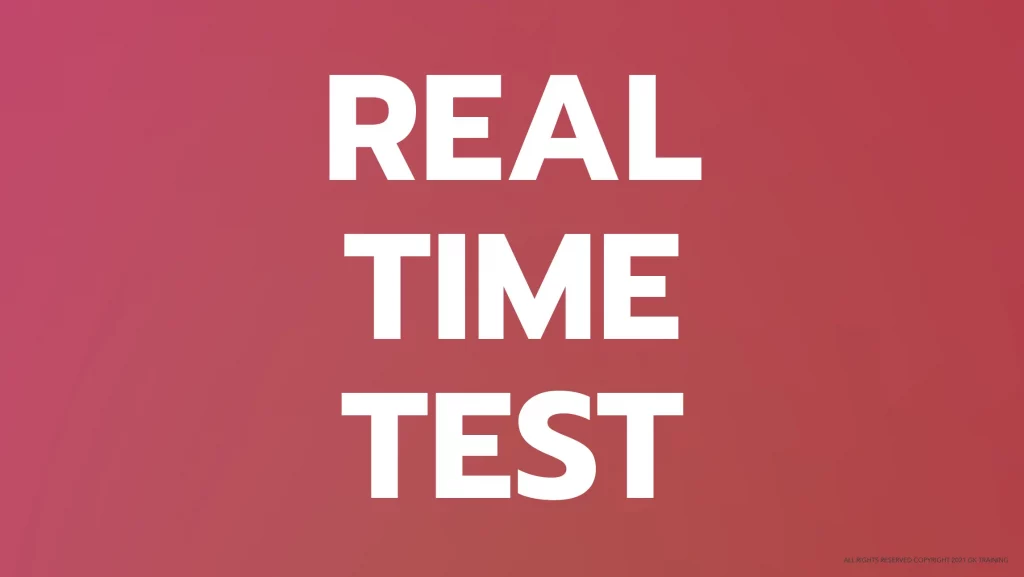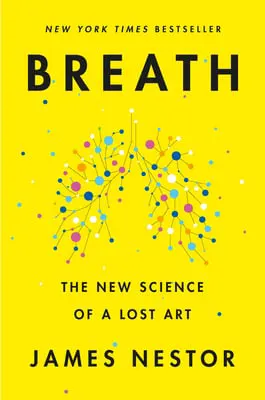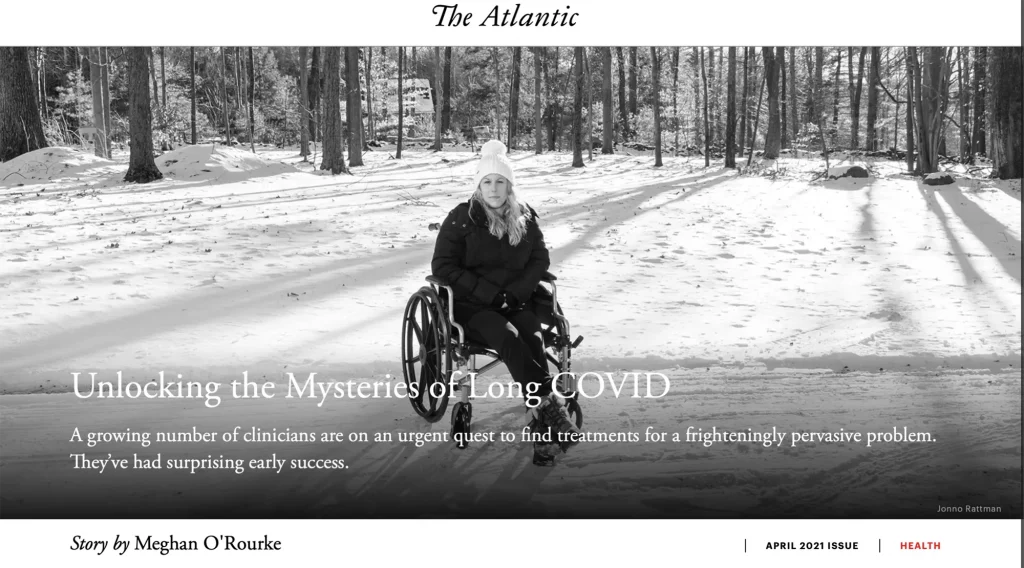
EXECUTIVE PRESENCE
PROGRAM: LATHAM & WATKINS
90-MIN WEBINAR_FIRST-YEAR ASSOCIATE PROGRAM
PROPOSAL
RUN OF SHOW
Executive Presence Run of Show
90 MINUTE WORKSHOP
WELCOME
WHY: Learners need a clear moment of embarkment, and a roadmap to know where they’re going and why.
ACTIVITY: The session begins with a moment of surprise and story-telling to engage. We set expectations and cover the agenda so participants feel comfortably in the hands of a trustworthy narrator and challenged by the session’s ambition. We emphasize how the day will equip the learners with new skills that are highly relevant at this beginning stage of their career, and explicitly give them permission to get feedback and support from those around them as they navigate their new legal home at Latham & Watkins.
VIRTUOUS CYCLE OF GOOD COMMUNICATION
WHY: Both what you say and how you say it are important, and they’re connected — in ways that are obvious…and not so obvious.
HOW: We consider the relationship between Content and Delivery. While communication training typically examines (and even debates) the ratio of which matters more, we focus on how to unlock a virtuous cycle in which better delivery actually unlocks better content.
CONTEXT:
See how our training helped Kenji use the Virtuous cycle to Eliminate “ums” and “urs”
LEARN MORE:
Watch a quick primer on the definition of the Vicious and Virtuous Cycles of Communication.
BREAKOUT 1
SELF-LED (Baseline)
HOW: Learners establish a baseline by presenting to their colleagues in breakout groups of six or less.
ACTIVITY: Each participant has opportunity to deliver the pre-work; each participant gets equal time. (Note: for the first breakout there is no peer feedback.)
THREE SURPRISES
HOW: Participants learn GK’s 3 suprises about good communication: 1. it comes from using more of yourself, not less; 2. it comes from being focused on the other person; 3. you do not need to feel confident to project confidence.
ACTIVITY: Participants consider the bandwidth with which kids communicate; they complete a thought experiment about 4 one-to-one communication scenarios and embed the key realization with a mneumonic exercise; and they lay the groundwork for liberating themselves from the “confidence trap,” via volunteer or call-and-response (if live), or chat feed (if remote).
CONTEXT:
Learn more about the confidence trap and the twin hazards of thought suppression and distinction in our 10-year anniversary message.
LEARN MORE:
THINKING, FEELING, AND DOING
WHY: Not all activities are created equal. Speakers often obsess over negative thoughts and insecure feelings, at the expense of actionable “Doings.”
LEARN MORE:
If you have a moment, watch his TED talk on how to speak up when you feel like you can’t!
WARM-UP
WHY: Communication is a physical art; preparing and priming your physical and vocal communication instrument is as essential to a speaker as a shoot-around is to a basketball player or an arpeggio is to a musician.
ACTIVITY: Participants complete a group warm up exercise, including customized tongue twisters. Participants receive access to GK’s warm-up video library as well as info for GK’s live weekday public warm-up.
LEARN MORE:
GK premieres a new five-minute warm-up every weekday morning on our YouTube channel. Take a look here.
TRANSPARENCY
HOW: Participants learn the GK Training 3 F’s of Transparency methodology: Fake it, Feature it, and Fix it.
ACTIVITY: After learning the alliterative 3 F’s framework, participants craft a “Transparency Phrase” they can use to navigate challenges and mistakes.
CONTEXT:
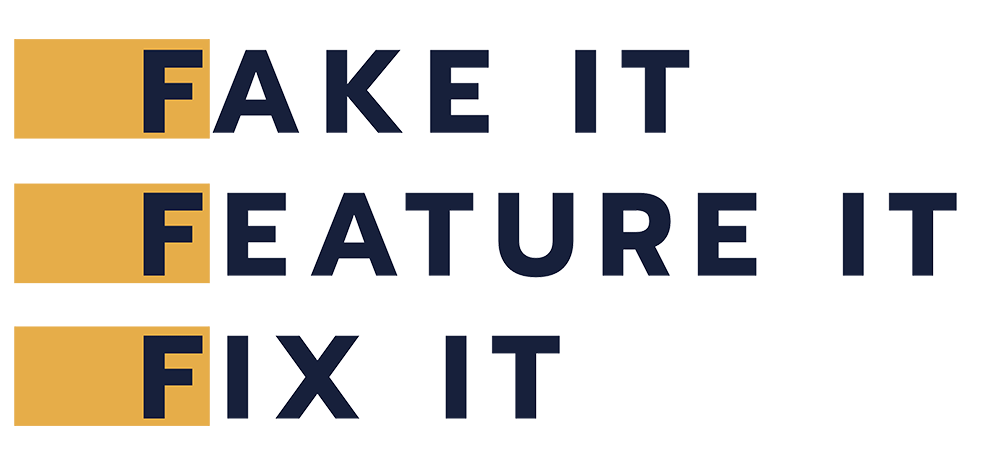
Watch a 90 second explainer.
3 F's In Action
LEARN MORE:
Want to know the philosophy behind Transparency? Watch this 2 minute explainer.
TRANSPARENCY
TRANSPARENCY
CONTEXT:
Check out this drill we call “A Mistake is not a Mistake.”
LEARN MORE:
What is Embodied Cognition? Visit the link above to learn more about why it’s effective.
VOCAL VARIETY
WHY: Vocal variety — the musicality in the human voice — indicates both meaning (please pass the red pen) and intent (please pass the red pen!!!). It need not be learned de novo, but rather constraints must be unlearned, as humans have used the musicality of sound to communicate ideas since time immemorial.
HOW: Participants learn the importance and origin of vocal variety, and understand it using the GK Training 5 P rhubric to evaluate it along the following alliterative dynamics: Pace, Pitch, Pause, Power, & Placement.
ACTIVITY: Participants map each of the P’s to the effect on an audience, as outlined in research (conducted by GK Founder Michael Hoeppner and colleagues at Columbia Business School, UCLA, Univ of Chicago, et al) on the impact of the 5 P’s on political audiences.
LEARN MORE:
What can you learn about Vocal Variety by reading to kids?
VOCAL VARIETY
LEARN MORE:
What can you learn about Vocal Variety by reading to kids?
KINESTHETIC LEARNING
WHY: To achieve actual behavioral change, participants need to learn not just with their brains but with their bodies. We use kinesthetic learning and embodied cognition to build new habits that stick.
ACTIVITY: Participants learn multiple drills that address derailers like: talking too fast, monotone communication, discomfort with silence, verbosity, and filler language. Here is a sampling of drills that you can expect at your workshop.
LEARN MORE:
Watch this Keynote from Michael Chad Hoeppner (Pay attention: A cork makes a cameo).
THREE S's
LEARN MORE:
BREAKOUT 2
SELF-LED
HOW: Learners practice the program’s lessons in breakout groups.
HOMEWORK AND
NEXT STEPS
ACTIVITY: The session wraps up with a preview of the reinforcement emails each participant will receive, an introduction to GK’s interactive practice app Question Roulette (custom version), and guidance on HW. Learners are explicitly encouraged to seek out feedback from stakeholders at Latham & Watkins moving forward.
CONTEXT:
Here’s a demo of the GK Practice App “Question Roulette”
OVERCOMING
OBJECTIONS
CONTEXT:
Here’s a video from our Online Learning Program about Overcoming Objections
OVERCOMING
OBJECTIONS
ACTIVITY: Instructor teaches the GK Training methodology for overcoming objections in 4 stages: Acknowledge; empathize; ask permission; address. Learners: identify how to remove oppositional language like but, although, and however; practice model on frequent client-specific objections in pairs, trios, or large-group volunteers. Aikido; and access to custom QR
CONTEXT:
Here’s a video from our Online Learning Program about Overcoming Objections
ENGAGING
THE SENSES
ACTIVITY: Instructor: Defines Sensory Engagement in the context of facilitation, and shows why it matters; 2. Illustrates examples of learning techniques that activate different senses; 3 Shares classic sensory involvement exercises as a jumping-off point for broader discussion.
CONTEXT:
Check this out: this slightly grotesque looking figure is a rendering of what the human body would look like if density of nerve endings were represented by physical size. Notice how big the hands are? And the lips and tongue? Translation: humans get a lot of information from the world besides just what they take in through their eyes and ears. So if you’re teaching a class and all you’re doing is talking at an audience while you show them slides, there’s a fairly good chance your audience is one thing: bored.
LEARN MORE:
Want to see the most innovative way we found to stimulate learner’s senses? We activated our online learners’ sense of touch in our posture lesson in EP 1.0 by challenging them to staple a post-it note into the shirt collar as a sensory reminder to be as tall as they are. Click here to watch (and maybe to embrace the challenge yourself!)
QUESTION AWARENESS
AND AGILITY
ACTIVITY: Instructor teaches GK Training’s Five types of effective questions and highlights their definitions, purpose, and common mistakes such as: asking in negative, failing to pause, asking multiple consecutive questions and more. Participants practice, using provided or self-created questions.
CONTEXT:
QUESTION AWARENESS
AND AGILITY
BREATHING TIME
TECHNIQUES
CONTEXT:
Here’s a video lesson from our Remote Training Course detailing how to use the GK Cards for BTT.
CREATING VISUALS
ACTIVITY: Instructor leads group through examination of: text overload (how much is too much? how small is too small?), visual element cohesion, repetition of agenda slide and more.
CREATING VISUALS
PRESENTING FROM VISUALS
CONTEXT:
Check out this lesson on Traffic Copping to get a better idea o how it works. NOTE THIS VIDEO NEEDS TO BE FOUND.
PRESENTING FROM VISUALS
CONTEXT:
Check out this lesson on Traffic Copping to get a better idea o how it works. NOTE THIS VIDEO NEEDS TO BE FOUND.
INTERJECTING WITH INTENTION
CONTEXT:
Take a look at this drill on how we teach interjecting with intention.
LEARN MORE:
There’s nothing to do here, nothing to click, no further reading. These two GIFs just help you remember how to Interject with Intention!
INTERJECTING WITH INTENTION
CONTEXT:
Take a look at this drill on how we teach interjecting with intention.
LEARN MORE:
There’s nothing to do here, nothing to click, no further reading. These two GIFs just help you remember how to Interject with Intention!
PHYSICAL PRESENCE -
POSTURE & STANCE
ACTIVITY: Instructor teaches: 1. why posture matters beyond making a good visual impression: aligned posture allows healthful, correct vocal production and contributes to a speaker’s level of energy or fatigue; 2. what good posture actually looks like, grounding the discussion in the Methodology of the Alexander Technique, debunks typical postural misconceptions like, sit / stand “up straight” or “pull your shoulders back.” 3. guides the group in a visualization technique to adjust their posture positively. Participants have an opportunity to adjust their posture and physical surroundings to reinforce the lesson.
CONTEXT:
Take a look at this drill on how we teach interjecting with intention.
LEARN MORE:
Want to learn more about the Alexander Technique? Read about its namesake pioneer, Mattihas Alexander, HERE.
PHYSICAL PRESENCE -
GESTURES
CONTEXT:
Get to know the GK drill “Silent Storytelling” from this webinar GK coach Shawn Fagan/Hilary Kole did
LEARN MORE:
BREATH
CONTEXT:
PRESENCE FOR PEOPLE
CONTEXT:
Check out this talk GK coach Hilary Kole presented to PDC on “Presence for People”
